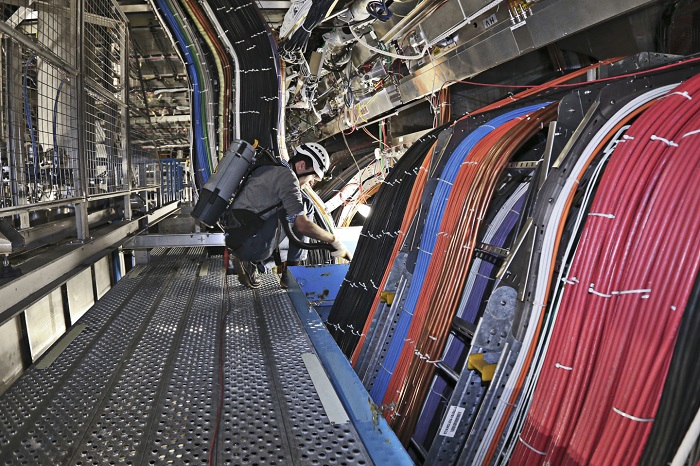The engineers at CERN, home to the Large Hadron Collider, have taken on a major housekeeping project that will take approximately three years to complete.
The task: identify and remove 9,000 useless cables before the LHC Injectors Upgrade Project begins in 2019.
Pull out one wrong cable and in the best case scenario, the team loses some data monitoring capabilities. On the flip side, remove the wrong line and it could lead to a significant safety hazard, or result in the accelerator not working.

In the past, when parts of the accelerator needed to be upgraded, the engineers would also replace the cables connecting them, and in doing so, leave behind the old cables no longer in use. Years of this practice have led to this moment in the collider’s history, where the cable trays housing all the cables are now too crowded to add new ones.
Worth noting is that each cable is about 50 meters long, travelling from the surface buildings at CERN’s base in Geneva down underground to the injector, so this is not a matter as simple as unplugging a cable and pulling it out of the system.

A team of 60 engineers has been assigned to clean up the mess of cables, which are all located in three of the collider’s injectors: the Proton Synchrotron Booster (PS Booster), the Proton Synchrotron (PS), and the Super Proton Synchrotron (SPS). Each one is estimated to have 3,000 useless cables, and all are part of a chain of machines that accelerate particles into the beams that eventually transfer to the actual collider.
Adding to the headache that is this project is the fact that it can only be done when the machines are on a technical stop, which lasts a couple of months in the winter. Obsolete cables began being disconnected in the PS Booster in December (2,700 have been recorded as disconnected); now, the focus is on the SPS. The cables will be physically removed during the next technical stop, which is scheduled for the end of 2016 because there won’t be enough time to confirm that disconnecting these cables won’t disrupt the functioning of the machines; only when confirmed can these cables be rid of completely.
Obviously, this project is not easy. Most of the cables the team is removing are associated with control and safety systems, both of which have gone through some significant technical upgrades since CERN was first established in 1954. The proton synchrotron is the oldest of the three accelerators, and was first put to work in 1959, before the Large Hadron Collider was even built, which means a lot of the cables first applied to the machine were applied using very different methodologies than those used decades later.
Worth noting: not targeted are the large power supply cables — they’re more of a permanent structure within the collider, and are intended to work over the equipment’s lifetime.
Guiding the engineers are documents located in the CERN database, which detail every cable’s technical features, function, and location. A team went through these papers and created a master document to guide the engineers on all the cables believed to be associated with obsolete systems.
Before the accelerators are restarted in February, all of the equipment will be checked and double-checked, to ensure this massive project does not lead to a catastrophic mess.
Via Motherboard
Advertisement
Learn more about Electronic Products Magazine





